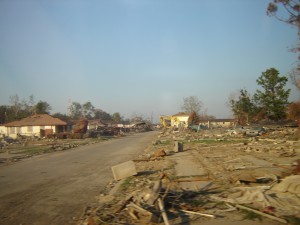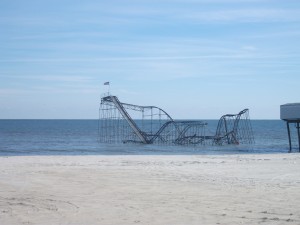Those who live in big cities know how unforgiving the parking meters are. Leave your car unattended longer than the time on the meter allows, forget to put that extra money in before time runs out, and here comes a parking ticket, with a hefty fine–$25, $50, or more, depending on the city and the location. In Chicago, we no longer even have the perverse satisfaction of knowing that the money at least helps fill the public coffers and pay for some potential service, perhaps covering police or firefighter wages that might do others some good. Thanks to a quick hustle and a compliant city council, Mayor Richard M. Daley in the waning days of his 22-year tenure managed to lease the parking meters for 75 years to a private company, and then spent our patrimony by filling budget gaps. The meters are now making that company rich while taxpayers are left holding the bag and, even worse, the city has forfeited the ability to use meter pricing strategies as a policy tool to influence urban development. This is the dark side of privatization: poorly considered decisions to squander public assets in the interest of short-term political gains, and sometimes feathering the nests of political allies.
But that is not the real point of this blog essay. I am really writing to say that those who were following this blog closely may have noticed a three-month hiatus since mid-November. The immediate reason for this was that I had simply hit a personal logjam where I allowed the needs of my position at the American Planning Association to chew up so much of my free time that I was unable to develop what I considered satisfactory commentaries, even though I had plenty of ideas and material to draw from. Last year, however, was a very busy year in which I completed 23 trips on APA business, plus two more to Iowa City in connection with teaching for the University of Iowa, and three more for personal reasons. Toward the end of the year, enough pressing tasks had accumulated, with enough pressing deadlines, that I decided I needed to set the blog aside long enough to see them through. This is, after all, a sideline enterprise. And deadlines are deadlines.
Then, as of December 20, which happens to be my birthday, I took a vacation. That Friday evening, my wife and I did what I had long wanted to do on my holiday season birthday. We attended the “Do-It-Yourself” Messiah, conducted by Stephen Sperber at the Harris Theater in Chicago’s Millennium Park. If you have never done this (and have no religious objections to the composition), I urge you to try it. The entire audience accompanies four professional singers and a small orchestra to perform the vast bulk of Handel’s magnificent, sometimes manic, composition over a three-hour span broken by one very welcome intermission. To the extent that people were willing, voices were separated throughout this wonderful underground theater—the altos and sopranos nearer the top, basses and tenors nearer the stage—although my wife and I stayed together in the alto section. You bring your own score, and you follow the music, and you join this magnificent ad hoc choir for the chorus parts, and then take a break during the various solos, performed by the professionals. It is an exhilarating holiday season experience. It was a great start to a holiday season, followed by a visit to relatives in Ohio, and then . . .
I was planning to post, and had composed one essay for later editing, and was working on all this the morning of December 31 in the café at a Barnes & Noble while my wife entertained two grandsons elsewhere in the store, and was too careless in slinging my laptop bag onto my shoulder when it came time to go, and . . .
I spent New Year’s Eve in some pain with a pinched nerve on my left side, which I spent more than a month remedying with physical therapy and massage in order to get back to my fitness routine. Ironically, the day before, I had switched my fitness club membership to one I thought more convenient, closer to home, in order to turn over a new leaf for the new year. Then I found myself putting that on hold until I could recover well enough to get a medical release.
But that’s not the whole story, either. The rest of the story goes back to feeding the meter. I had gotten a notice in November that the version of WordPress on my blog would not be supported after a certain date, but that was before the hiatus, and I paid it little mind as I had more urgent business to attend to. Bluehost was going to do the update anyway. Then, by the end of December, I found that my WordPress admin site was devoid of content or any means of uploading content, and I was not sure what to do next because, frankly, I am not much of a techie. I learn what I need to know but not always a whole lot more. My niece, who studied graphic design in college, designed this website, but withdrew from the business some time ago in favor of motherhood. I went searching for a web designer in Chicago to assume those tasks. But by then, my luck had run out. I was having difficulty for a few days just sitting at a desk long enough to read my e-mail. I had little energy left for a blog by the time I finished a normal work day, and those therapy appointments ate up time as well. Then my new web designer seemed to disappear as fast as I had found him.
It turned out he had complications from surgery on a broken forearm, a plenty good reason to have gone incommunicado in the short term. But then he got back in touch, and I am happy to welcome Christopher Merrill as the professional who can keep this website and blog in good shape from now on. And I am once again feeding the meter.
But I have yet to feed another meter. Another notice–from Quicken– that the download function on my Quicken 2011 would no longer be supported as of a date certain if I did not update to Quicken 2014, has taken on new urgency. These guys mean business. They don’t support old software forever.
Feed the meter.
I say this with a newfound humility, even as I have no apologies for understanding professional priorities, and know that I balance more of them better than many people, but not all of them perfectly all of the time. But the software barons are not shy about applying the virtual Denver Boot. I’d best take care of Quicken, but at least the blog is back in operation.
Like our public thoroughfares, the Internet is free only to a point. I have fed the meter.
Jim Schwab



